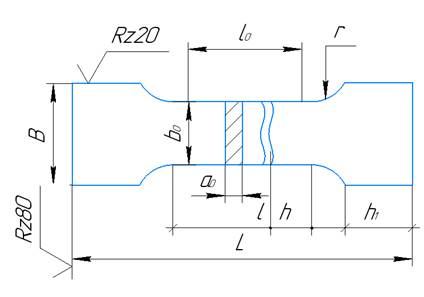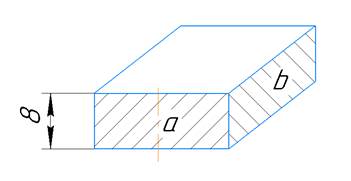Introduction
Meantime Gazprom is operating over 170000 kilometers of main gas pipelines, in practice more than 70% of gas pipelines are worn out for 30 years and more of operation. During this time gas pipelines insulating coating has become completely degraded, pipe steel aging process is in progress, metal structure is changing. The number of corrosive and fatigue damages of pipes is repeatedly increasing. The changes in strength property and microscopic structure of pipe steel have been examined on one of the local pipelines, which is being operated in the Republic of Bashkortostan.
The main gas pipeline was placed in operation in 1958. One of the gas pipeline design features is that it was constructed of composite pup-joints (no more than 6 m) of «Ц» category, 529 mm diameter, manufactured according to VTU-06-ОС-58 and using the Czech production pipes, of 508 mm diameter.
The 529 mm diameter and 8 mm wall thickness pipes were made of 10G2C1 grade steel with the following characteristics:
– break point, ![]() MPa;
MPa;
– yield limit, ![]() MPa;
MPa;
– percent eleongation, ![]() %;
%;
– impact elasticity, at t=![]() , 108 KCV
, 108 KCV
At that time technical specification had no provision for metal sensing with metallography or UT methods and no limits for nonmettalic inclusions availability. During pipeline technical diagnosis with UT tests, point defects (nonmetallic inclusion type) and extensive defects (lamination type) have been discovered, which are not acceptable under the current regulatory requirements.
Sample preparation for tests
During major overhaul in 2016, metal samples were cut from dismantled gas pipe for mechanical tests.
The samples were prepared by abrasing machining and polishing. Etching of on test surface was performed with a 5% solution of nitric acid in ethanol.
The samples were cut out out from the dismantled pipe for impact bending test purposes [2] (T type field shaper, 3 type) (figure 1) and samples for burst test [1] (I type, sample No 2) (figure 2).

Figure 1 – Sample with T type field shaper (fatigue crack)

Figure 2 – Headed plane sample
Testing of materials for impact elasticity is based on breakdown of a standard sample with field shaper (notch) in the center by impact on the pendulum hammer. When performing the impact test, a metal working capacity is assessed under complex loading conditions and its liability to brittle fracture is disclosed.
Test operation
Samples mechanical test for uniaxial tension was performed on Instron 5982 tensile machine [1]. Deformation rate during tests is 5 mm/min, 4 samples were tested from each steel ingot section and average values were calculated.
Impact toughness testing (KCV) at temperatures ![]() and
and ![]() have been performed with a Schenck Treble tensile machine [2].
have been performed with a Schenck Treble tensile machine [2].
According to the results of conducted tests, break points, yield limits, percent elongation (elasticity), impact elasticity (KCV) were determined at temperatures ![]() and
and ![]() . Samples cooling was carried out by their submerging into ethyl alcohol, cooled by liquid nitrogen till
. Samples cooling was carried out by their submerging into ethyl alcohol, cooled by liquid nitrogen till ![]() . Samples temperature monitoring was carried out by use of installed checking thermocouples. Mechanical test results are given in Table 1.
. Samples temperature monitoring was carried out by use of installed checking thermocouples. Mechanical test results are given in Table 1.
Samples metallographic examination was conducted with a Carl Zeiss optical metallurgical microscope in compliance with [3]. The observation was carried out at 100, 200 and 500 fold increase in two planes a and b, as indicated in Figure 3.

Figure 3 – Sample graphic pattern for metallographic examination
Laboratory tests results
Table 1 – Mechanical tests results
|
Sample No |
Break point, |
Yield limit, |
Percent elongation, |
Impact elasticity, KCV, |
Impact elasticity, KCV, |
|
1 |
528 |
387 |
26 |
93 |
65 |
|
2 |
485 |
363 |
28 |
91 |
53 |
|
3 |
548 |
393 |
26 |
101 |
61 |
|
4 |
477 |
352 |
30 |
94 |
55 |
|
5 |
495 |
357 |
28 |
89 |
50 |
|
6 |
569 |
419 |
27 |
106 |
64 |
|
7 |
479 |
357 |
23 |
86 |
44 |
|
Certificate value |
550 |
428 |
28 |
108 |
– |
Conclusion
The following has been revealed during performance of laboratory research for pipe materials:
– metal tensile strength is 15% less than the value indicated in the certificate; impact toughness is 21% less than the value indicated in the certificate, which do not meet the product’s specification. Below-limit values of impact toughness for gas pipeline materials negatively affect the parameters of resistance to breaking and service of life;
– difference in ferrite metal grains and metal constituents volume ratio, as well as lack of traces for carbon redistribution process testify that the origin for discrepancy in pipe turned out to be breakdowns in the technological process of pipes manufacturing.
REFERENCE LIST
1 GOST 1497-84. Metals. Tensile test methods. – approved by the USSR State Committee for standardization. – M.:Standartinform, 2008. – 24 page.
2 GOST 9454-78. Metals. Test procedure for impact bending at low, ambient and elevated temperatures. – approved by the Minister Counsel State Committee for standardization. – M.:IPK Standards Publishing House, 2002. – 11 page.
3 GOST 5640-68. Steel. Metallographic method for microstructure assessment in metal sheets and tapes. – approved by the USSR State Committee for standardization. – M.:Standardtinform, 1988. – 18 page.

